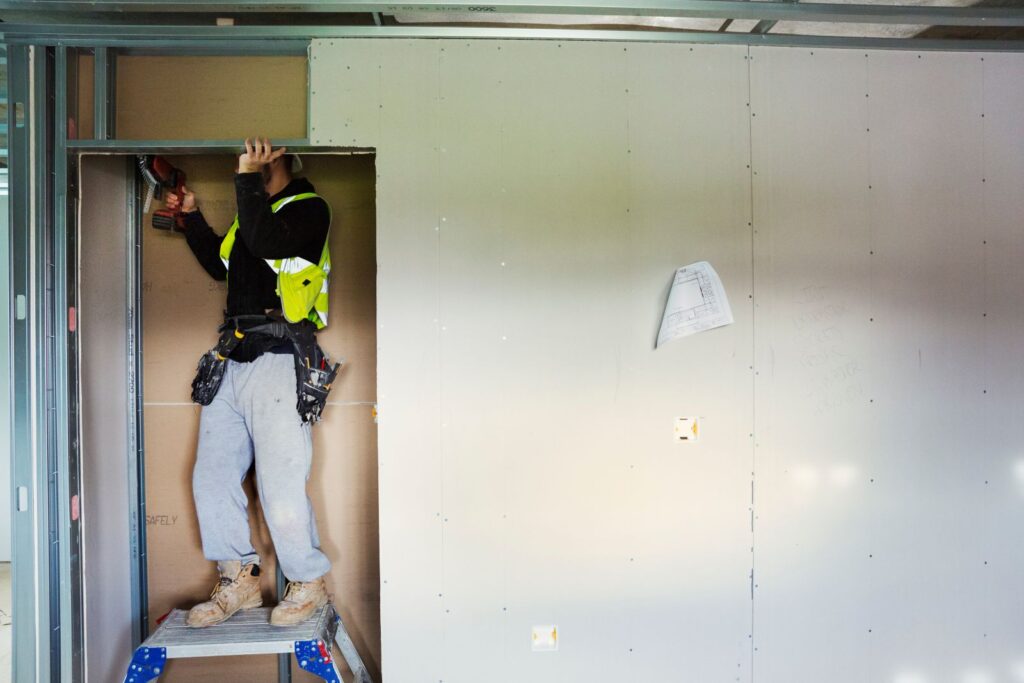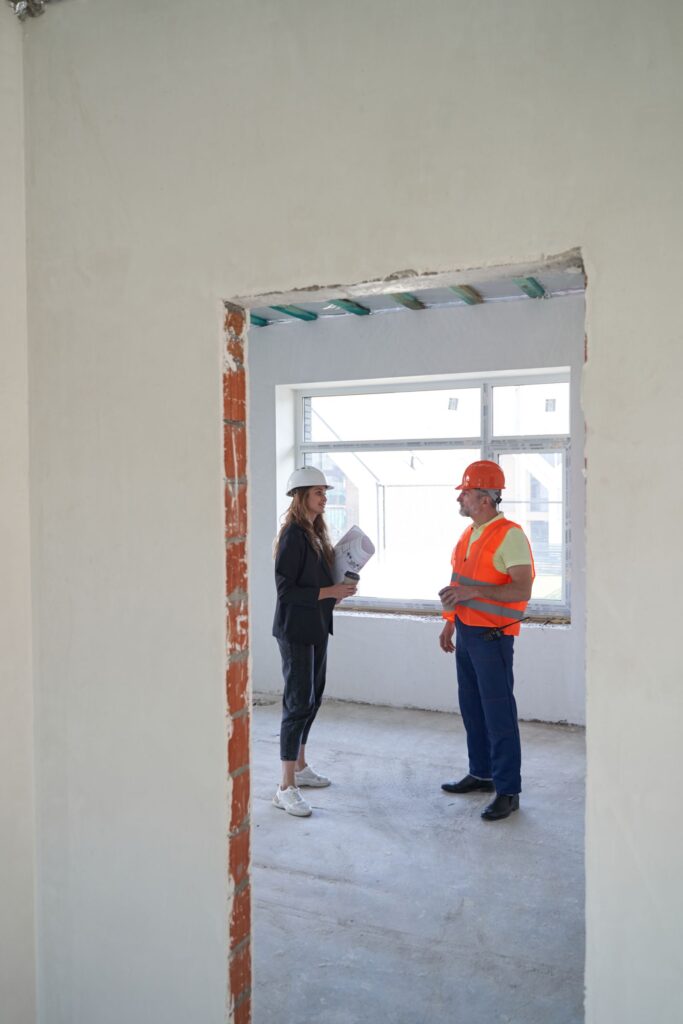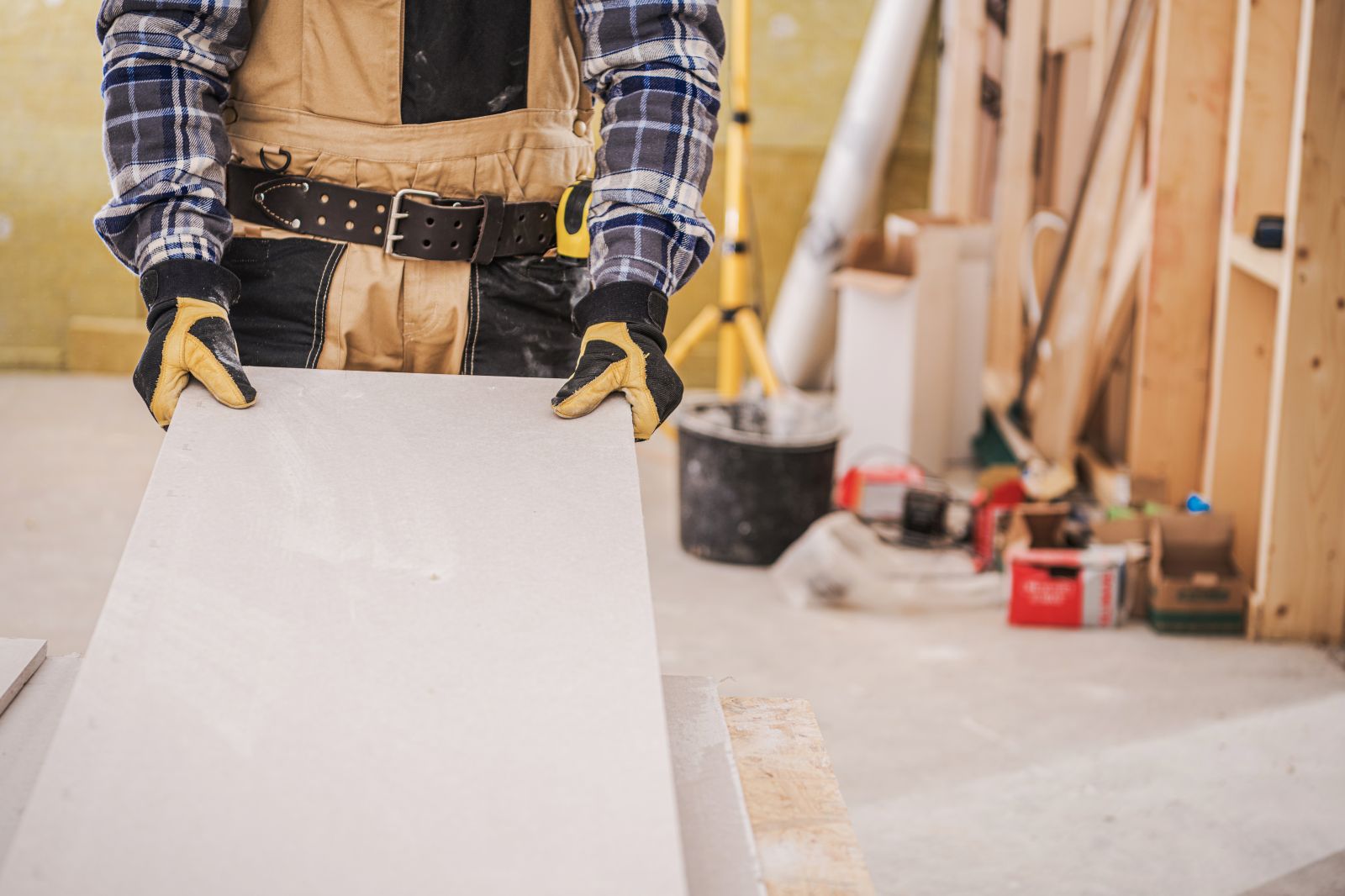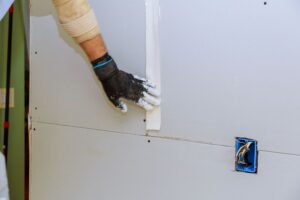Let’s be real—walls aren’t always straight, square, or simple. And if you’re renovating a home with a curved hallway, a lofted ceiling, or an open-concept layout full of angles and alcoves, you know exactly what we’re talking about. The truth is, when things get tricky, only the best sheetrock installation companies can handle the job right.
At SGP Drywall, we’ve worked on our fair share of challenging wall designs. Whether it’s high ceiling wall paneling, radius corners with sheetrock, or those quirky tight space sheetrock solutions, we’ve seen it—and fixed it—all. This article dives into how pros tackle complex sheetrock installations without sacrificing quality, speed, or aesthetics.
Why Complicated Wall Layouts Aren’t Just a Design Quirk
Modern homes (and plenty of creative remodels) are pushing boundaries—literally. Homeowners and architects are embracing dramatic geometry, sweeping curves, and multi-level transitions. While these designs are stunning, they make sheetrock wall installation anything but plug-and-play.
Here’s why:
- Sheetrock doesn’t bend easily (but it can bend!)
- Ceiling height affects panel stability and seams
- Custom framing often creates uneven surfaces
- Odd angles require custom cuts and dry fitting
Without a team experienced in drywall framing for unique layouts, these jobs quickly go sideways—sometimes literally.
1. Curved Walls: The Arch-Nemesis of DIY Sheetrock
Let’s start with one of the most notoriously complex challenges: curved wall sheetrock techniques.
What Makes It Hard?
- Standard drywall is rigid
- Radius walls demand precision measurements
- Improper installation causes cracking or bulging
How the Pros Handle It:
- Use thinner drywall (1/4″ or 3/8″) and apply water or steam to gently bend the panel
- Pre-score the back of the board to make it flexible
- Attach to curved framing in stages using screws and adhesive
- Sand and finish with a feathered edge to blend seamlessly
This is where professional sheetrock services truly shine—experience matters.
2. Vaulted Ceilings: Elevating the Challenge
Vaulted ceilings are beautiful, airy, and bright. They’re also a drywall installer’s worst nightmare—unless you know what you’re doing.
Common Problems:
- Working at steep angles requires specialized lifts and scaffolding
- Seam placement is critical to avoid visible cracking
- Weight distribution on slopes can strain the joints
Top Solutions from Pros:
- Staggered seams for added strength
- Proper back-blocking and screw patterns
- Use of lift systems to safely and precisely install panels
- Planning for ceiling transitions and drywall alignment
A typical homeowner or handyman might try to tackle a vaulted ceiling—but sheetrock for complex structures like this should be left to the experts.
3. Tight Spaces: Where Precision Rules

If you’ve ever tried to install drywall in a hallway, closet, or under a staircase—you know the pain. There’s no room for error (or for your elbows).
What Makes It Tricky:
- Limited working space
- Obstructions like pipes, studs, or ductwork
- Need for accurate measurements and minimal cuts
How Pros Do It Right:
- Pre-cut panels before bringing them into the space
- Use rotozips and jab saws for electrical boxes and outlets
- Plan cuts around the structure to reduce joint lines
With tight-space sheetrock solutions, it’s all about planning ahead and minimizing mess in confined areas.
4. Uneven Surfaces and Framing Issues
In older homes or on tricky remodels, nothing is truly level or square. If you’re working with uneven surface drywall, you already know the frustration.
Biggest Issues:
- Gaps between framing and panels
- “Wavy” finishes that show under paint
- Glaring shadows from lighting due to poor alignment
How Sheetrock Installation Companies Fix It:
- Shim behind drywall to level out gaps
- Use laser levels to align panels precisely
- Add extra blocking or sister framing where needed
This kind of prep work might seem tedious, but it’s what makes architectural drywall installation look clean, professional, and high-end.
5. Ceiling Transitions, Alcoves, and Angled Niches
Modern home design loves to throw in decorative soffits, built-in niches, recessed lighting, and dramatic angles. They look amazing—if done right.
Common Problems:
- Misaligned seams at transitions
- Awkward corner beads
- Mis-cut panels that waste materials
How the Experts Nail It:
- Dry fit before final screw-in to adjust fit
- Use flexible corner beads or custom trims
- Plan intricate sheetrock applications around lighting and framing first
Precision makes the difference between a high-end finish and a patchy DIY-looking job.
6. High Ceiling Wall Paneling: Height = Complexity
Anything above 9 feet tall presents a new set of challenges.
Why It’s Complicated:
- Extra-long panels are harder to maneuver
- Seams must be minimized and reinforced
- Requires lifts or scaffolding for safe installation
Pro-Level Fixes:
- Use 12′ or 16′ sheets to reduce seam lines
- Install horizontally in some cases to match framing
- Pre-plan mudding and sanding access
High ceilings are often showpieces, so flawless finishes are essential—something only top sheetrock installation companies can consistently deliver.
Why You Shouldn’t Trust Complex Layouts to Just Anyone
You might be tempted to hire the cheapest quote or a handyman with “some experience” in drywall. But with difficult layouts, mistakes multiply quickly.
Here’s what can go wrong:
- Wasted material from incorrect cuts
- Weak joints and premature cracking
- Paint and texture issues that reveal every flaw
- Failed inspections or resale complaints
Custom wall sheetrock installation isn’t the place to pinch pennies. This is where it pays—literally—to go with professionals who specialize in sheetrock for complex structures.
How to Spot a Sheetrock Company That Can Handle Complex Work
Not every drywall company is equipped for intricate layouts. Here’s what sets the best apart:
- Experience with radius and vaulted work
- References from complex residential or commercial jobs
- Use of specialized tools like panel lifts and digital measurers
- Willingness to problem-solve in the field
- In-house texture and finishing specialists
The best drywall layout solutions come from companies that treat the job like a craft—not just a contract.
Let SGP Drywall Handle the Hard Stuff

Whether you’re building a modern masterpiece or renovating a space with curves and corners galore, SGP Drywall has the tools, talent, and experience to get it done right.
We specialize in professional sheetrock services for complex layouts, and we’re proud to serve homeowners, contractors, and designers across San Diego. From vaulted ceilings to curving staircases—we’ve got your walls covered.
Ready to make your toughest layout a flawless finish?
Contact SGP Drywall today, and let’s talk about your next wall-worthy project.
FAQ: Sheetrock Installation for Challenging Layouts
Can textured walls be applied after complex drywall installation?
Yes, but it requires experience. Complex layouts often create odd lighting angles that highlight imperfections. Professionals typically skim coat joints to a flawless level and then apply texture by hand or spray, blending it seamlessly with surrounding surfaces. Matching texture is especially important if you’re combining new drywall with existing walls.
Are longer drywall panels always better for tall walls?
Not always. While longer panels reduce seams (which is a plus), they can be hard to handle, especially in small rooms or spaces with framing irregularities. In some cases, installing drywall horizontally or using standard 8′ panels in staggered formations may actually result in better finishes and fewer waste materials. Pros assess the layout before deciding.
Looking for more expert tips on Drywall Repair and finishing?
Check out the full SGP Drywall blog for guides on everything from texture matching to prepping your walls for paint perfection.
And don’t miss our next article:
“Painter Drywall Repair Techniques That Prevent Paint Peeling and Bubbling“—a must-read if you’re getting ready to repaint and want your walls to hold up long-term.




